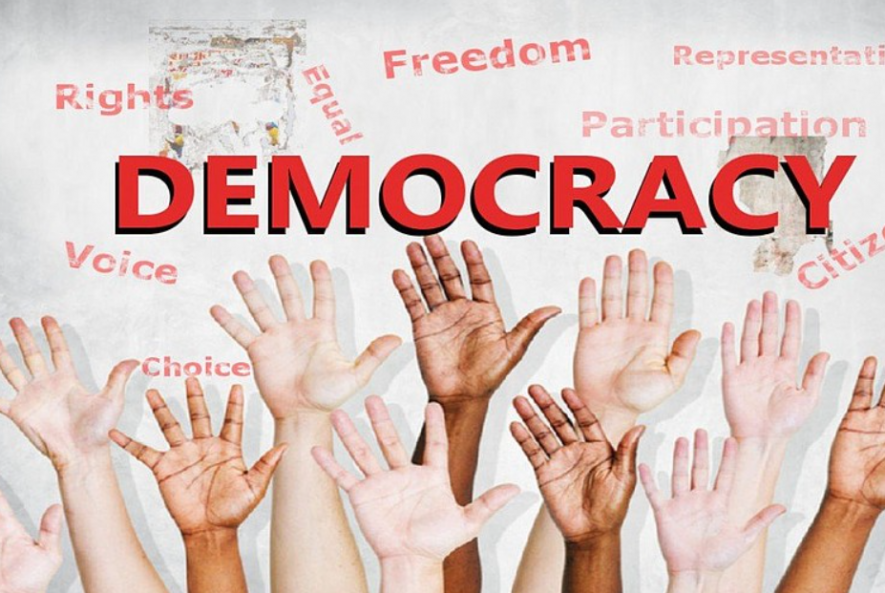Task for 21st Century Socialism Lies in Grasping Basics of Democracy, Autocracy, Capitalism

Democracy exists if and when a community organises its self-governance around the full participation, on an equal basis, of all the members of the community. Its other, autocracy, exists when a community organises (or allows) its governance by an individual or subgroup of that community, a ruler. Universal suffrage is clearly a step toward at least formal democracy because voters elect leaders. How real this formal democracy is, depends on the inclusivity of the population voting and the concrete reality of voters’ equal influence on the election’s outcome.
Residential communities in many parts of the modern world operate in formal democracies. However, they usually allow individuals with high levels of income and wealth to use these means to influence others in their voting, whereas individuals with low levels of income and wealth can and usually do wield less influence. The capitalist economic system generates precisely that unequal distribution of income and wealth that creates and sustains a wide gap between formal and real democracy in the world today. That gap in turn reinforces capitalism.
Workplace communities are those collections of interacting individuals comprising enterprises: factories, offices, and stores. In societies where capitalism prevails, enterprises are very rarely organised democratically. Instead, they are autocratic.
Inside most workplace communities in today’s world, an individual or small subgroup within the workplace community, a ruling group, governs the workplace community. An owner, an owning family, a partnership of owners, or a board of directors elected by major shareholders comprises the ruler in capitalist enterprises. Their autocratic governance reinforces and is reinforced by the unequal distributions of income and wealth that they generate.
The democratic impulses that were provoked and suppressed in turn by monarchical autocracies occasionally matured into social movements. These movements were sometimes able to alter relations between the ruler and the ruled, but usually succeeded only to a limited degree and temporarily. Eventually, some of these social movements gathered enough strength to dislodge those rulers and end autocracies in residential communities. Kingdoms, czarisms, and oligarchies were then overthrown as a result of this. In their places, revolutionaries often established representative (parliamentary) democracies.
Democratic impulses, similarly provoked and suppressed inside workplace autocracies, have not yet matured into social movements that are strong and focused enough to overthrow autocracy inside workplaces. Social movements did develop far enough to form labour unions and labour-based political parties, and to win greater diversity of race and gender among workplace participants. Unions utilised collective bargaining to alter the terms of the relations between employers and employees. Labour-based political parties used suffrage to yield laws that also changed the terms of the employer-employee relationship.
Yet labour unions and labour/socialist parties rarely targeted—let alone achieved—transforming workplace autocracies into workplace democracies. Even at moments in history when labour unions and Left parties coalesced to build impressive social power—such as the New Deal of the 1930s in the United States or social democracy in 20th-century Europe—they could not or did not move to end the social prevalence and dominance of capitalism’s autocratic enterprises. No revolution occurred in the sense of a transition beyond the capitalist organisation of enterprises and its autocratic division of participants into an employee majority and a governing employer minority.
Autocracies inside workplaces have endured in both private and state enterprises. In private enterprises, the rulers have often been individuals, partners, or corporate boards of directors: all persons with no positions within any state apparatus. Alternatively, rulers have also often been state officials positioned inside state enterprises (owned and operated by the state) in ways parallel to the positions of private corporate boards of directors. In such cases, the label “socialist” applied to such state enterprises might refer to some aspects that differentiated them from private capitalist corporations. But such “socialist” enterprises were not different in their autocratic internal organisation.
Over the millennia, democratic impulses were occasionally able to establish democratically governed workplaces in some places and during certain times. In them, all members of the workplace community had equal voting power to determine what, how, and where the enterprise produced and what was done with the enterprise’s product. We shall call these democratically governed workplaces worker cooperatives (as they sometimes named themselves).
Across the many centuries when slavery, feudalism, and capitalism were the chief sorts of economic systems, worker cooperatives were marginal forms of workplace organisation. The conditions, objective and subjective, were absent for worker cooperatives to become the socially prevalent forms of workplace organisation.
However, their scattered presences kept alive the notion that democratised workplaces were a possible alternative to the socially prevalent autocratic enterprises. Critics of autocratic workplaces often supplemented their opposition to them with advocacy for worker cooperatives.
Marxism’s criticisms of capitalism in the century after Marx’s death might have led it to advocacy for worker cooperatives. Instead, Marxism’s anti-capitalism focused on pinpointing which agents could accomplish a transition from capitalism to socialism. There were two key agents considered: first, the working class, and second, the state.
The consensus that emerged was simple. The working class as society’s majority would seize the state. This might happen via voting, or it might require a revolution. Either way, once state power was won by an organised working class, it would use that power to make the transition from a capitalist to a socialist economic system.
That consensus led both socialism and Marxism eventually to an excessive focus on the state and all it might do to negate, overwhelm, and displace capitalism and its baleful social effects. Government regulations of enterprises, government ownership and operation of enterprises, and government control of the market: these became the various definitions of what socialists would do once they had state power. As history shows, that is what most socialists and Marxists did in fact do when they acquired state power.
What happened was another historic example of a movement for basic social change mistaking one step taken toward its social goal for the achievement of that goal itself. Socialisms including and since the 1917 Soviet revolution increasingly defined and declared their state-regulated and controlled workplaces to be “socialism.” That socialism, however, included an enduring autocratic organisation of the workplace.
Developing socialism thus became the continuous refinement and shaping of the government’s great influence on the economy toward approved social goals. Socialism might even advocate giving its working classes greater civil liberties and freedoms.
What Marxism and socialism had lost sight of was the internal organisation of workplaces. Those stopped being seen as sites of profound class struggles once “socialism” was proclaimed. The need to transform the organisation of enterprises’ internal relations of production from autocratic to democratic dropped from most socialists’ focus.
Thus, the Soviet Union, China, Sweden, and other socialist variants experimented with differing kinds and degrees of state interventions in the economy. For example, Sweden chiefly regulated private enterprises with autocratic internal structures. In contrast, the Soviets took over, owned, and operated state enterprises with autocratic internal structures.
China now experiments with a combination of both Swedish and Soviet socialisms to produce its “socialism with Chinese characteristics.” Chinese socialism operates with autocratic organisations inside both its private and state enterprises.
If we define capitalism in terms of the employer-employee internal structure of its enterprises—what Marx termed their “social relations of production”—most socialisms to date have not yet accomplished transitions beyond capitalism. To do that, they would have to change the prevalent internal organisation of their enterprises to democratic worker cooperatives. Indeed, that has now become the task for 21st-century socialism.
Richard D. Wolff is professor of economics emeritus at the University of Massachusetts, Amherst, and a visiting professor in the Graduate Program in International Affairs of the New School University, in New York.
Source: Independent Media Institute
Credit Line: This article was produced by Economy for All, a project of the Independent Media Institute.
Get the latest reports & analysis with people's perspective on Protests, movements & deep analytical videos, discussions of the current affairs in your Telegram app. Subscribe to NewsClick's Telegram channel & get Real-Time updates on stories, as they get published on our website.
























